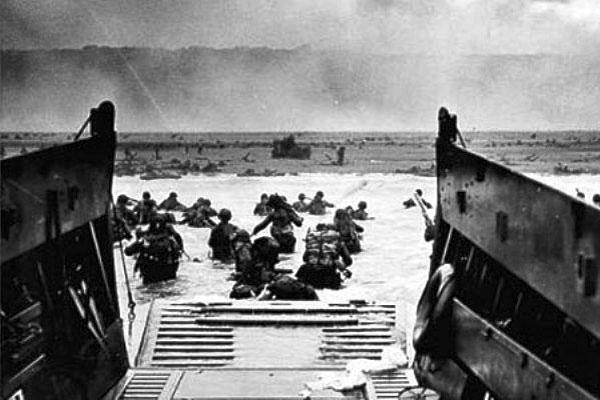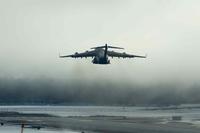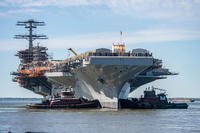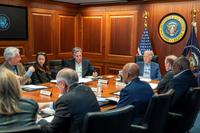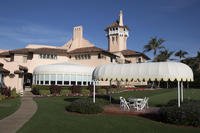"My heart was pounding out of my shirt," Army Pvt. Benjamin Alvarado said of the early morning hours of June 6, 1944.
"It was time to go over, grab the rope net, lift my leg over the side, hang on for dear life, 60 pounds on my back" and into the Higgins boats that would take G Co., 16th Regiment of the 1st Infantry Division -- the "Big Red One" -- to the beaches of Normandy.
The destination was the Easy Red zone of Omaha Beach. The mission was to breach Festung Europa, Adolf Hitler's "Fortress Europe."
Alvarado and 160,000 other Allied troops would "fight a battle that would decide the fate of freedom in the 20th Century," President Obama said in the White House proclamation to mark the 70th anniversary of the D-Day invasion.
Obama will be joined on the cliffs of Normandy by European leaders including German Chancellor Angela Merkel and Britain's Queen Elizabeth II, herself a World War II veteran as a mechanic in the Women's Auxiliary Territorial Service. Russian President Vladimir Putin also plans to join.
Ceremonies such as a fly over by U.S. B-52s will mark the landmark anniversary.
The memories of D-Day veterans like Alvarado have been captured by the Veterans Oral History Project at the Library of Congress. He and other veterans shared their first-person accounts of the invasion of Normandy that changed history.
British Prime Minister Winston Churchill had warned that the beaches of France might well be "choked with the bodies of the flower of American and British manhood." Gen. Dwight D. Eisenhower, the Supreme Allied Commander, drafted a letter to be distributed if the invasion failed.
The troops had done all that "bravery and devotion to duty could do. If any blame or fault attaches to the attempt, it is mine alone," Eisenhower wrote.
None knew the odds better than Pvt. Alvarado as the Higgins boat zigzagged to the beach.
"The ramp went down and I was the third one out. Water up to my chest. Holding my M-1 high. At the water's edge, I tripped over several dead GIs," Alvarado wrote in a memoir for the Veterans Oral History Project.
"I ran as fast as my legs could carry me through smoke and a gauntlet of enemy fire. I ran toward a bluff that had a slight overhang where others were huddled. We were wet, scared and trapped, all in a state of shock. Nothing was said," Alvarado wrote.
Coast Guard Radioman Leroy C. Bowen Jr. remembered the bodies tossing in the surf, the bodies piled on the beach forming obstacles to the next wave of troops.
"The [German] guns concentrated on the ramps where the troops were coming down and the ramps were blown to crap," Bowen said in an audio memoir for the History Project. "It made it impossible for the troops to get past the pile of dead and the wounded at the foot of the ramps."
His own ship was shot up so badly that the crew would later have to plug the holes with mattresses to make it back to England.
Bowen went about a grim task. He spoke haltingly of it.
"What I remember is pulling the men out of the water. Here you're pulling, well, there's so many dead bodies here and there that it's hard. You don't know whether you had a live or a dead one. I had nightmares about it."
In the carnage and chaos on Omaha Beach, Lt. Gen. Omar Bradley, commander of the 1st U.S. Army, began planning to shift forces from Omaha to easier going on Utah Beach to the west.
"There was something that came over the radio that Bradley was thinking of calling off Omaha Beach because it was so hot and we were told not to go in, to hold back," Bowen said. His commander decided otherwise. They went back in.
The "dog-faced soldiers" stuck on the beach also had other ideas. One of them was Col. George A. Taylor, Alvarado's boss as commander of the 16th Regiment of the Big Red One.
Taylor hollered: "Two kinds of people are staying on this beach -- the dead and those who are going to die. Now let's get the hell out of here."
The problem was the line of cliffs up to 150 feet high and extending for four miles parallel to the beach. The troops clawed their way to the top.
At the end of D-Day, 155,000 Allied troops had swarmed ashore on beaches Omaha, Utah, Juno, Gold and Sword. They controlled 80 square miles of France at the price of 9,000 killed or wounded.
"Communique No. 1" went out from headquarters: "Under the command of General Eisenhower, allied naval forces supported by strong air forces began landing allied armies this morning on the northern coast of France."
-- Richard Sisk can be reached at Richard.Sisk@monster.com.
